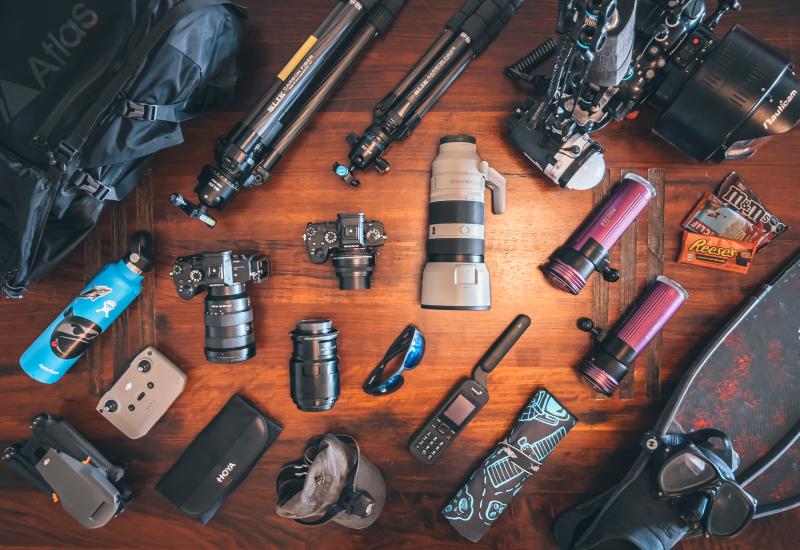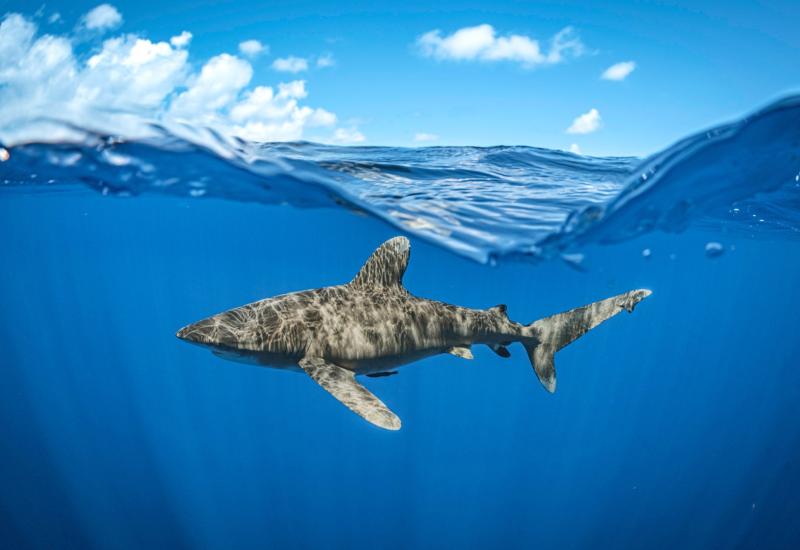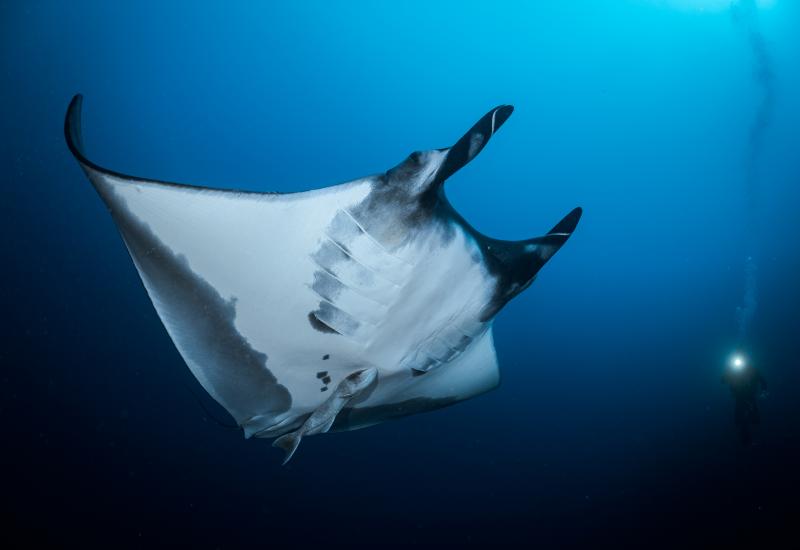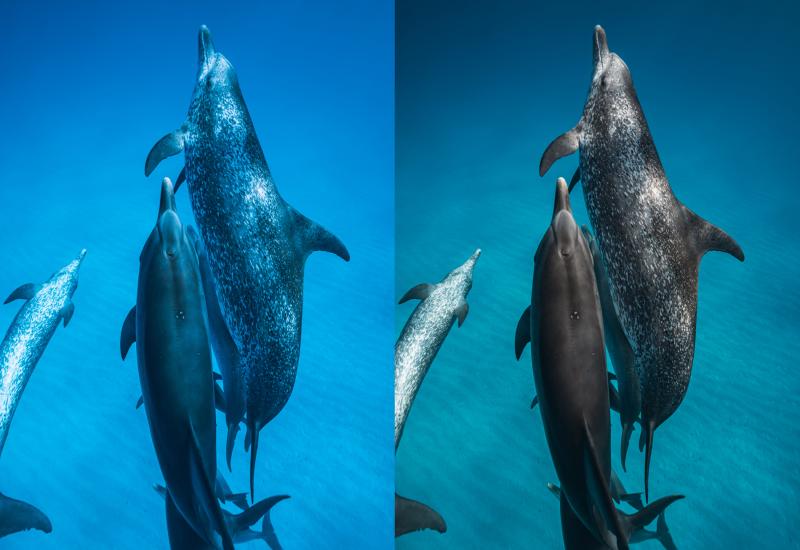Why Underwater Photographers Should Join a Liveaboard Photo Workshop
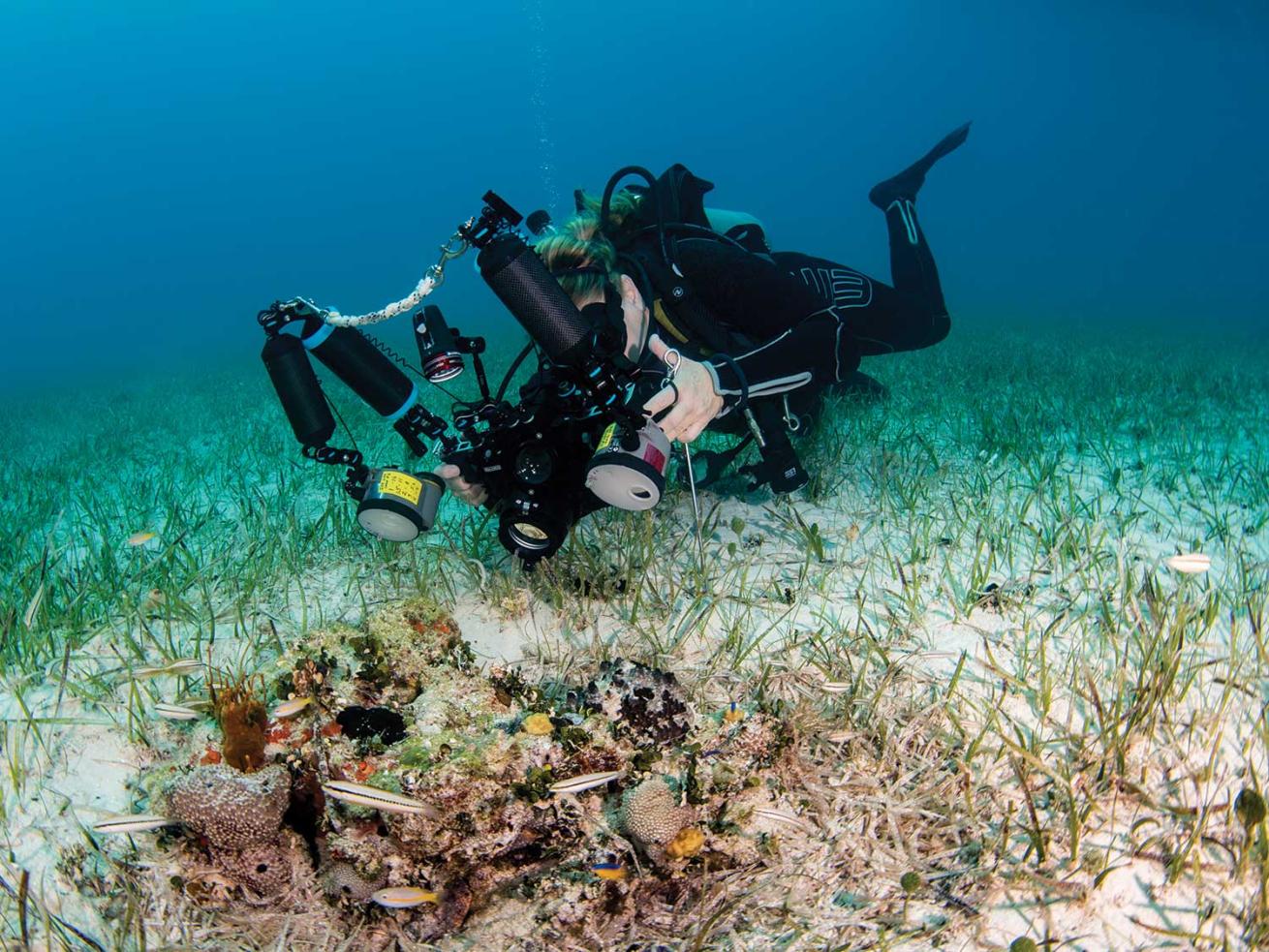
Tanya G. BurnettMacro subjects deliver photo ops.
Fifty photos in 15 minutes.
It might not be a personal record, but it’s certainly a testament to the action surrounding me at the Lost Blue Hole— dive site No. 1 on this 10-day charter aboard Bahamas Aggressor.
I slip beneath the surface to be greeted by a big school of shimmering horse-eye jacks circling over the deep blue hole. Then, an urgent signal from my divemaster alerts me to a school of sharpnose sharks finning off in the distance—my very first sighting of this cute 3-foot-long species. Southern rays circumnavigate the edge of the abyss, while Caribbean reef sharks warily patrol the reefs. I do my best to photograph them as they glide over tube sponges and sea fans. Checking my computer, I confirm that 15 minutes in, I have dozens of images and a lifer shark sighting. I grin, thinking of what the rest of the week might provide as another reef shark turns at the sight of my strobe firing.
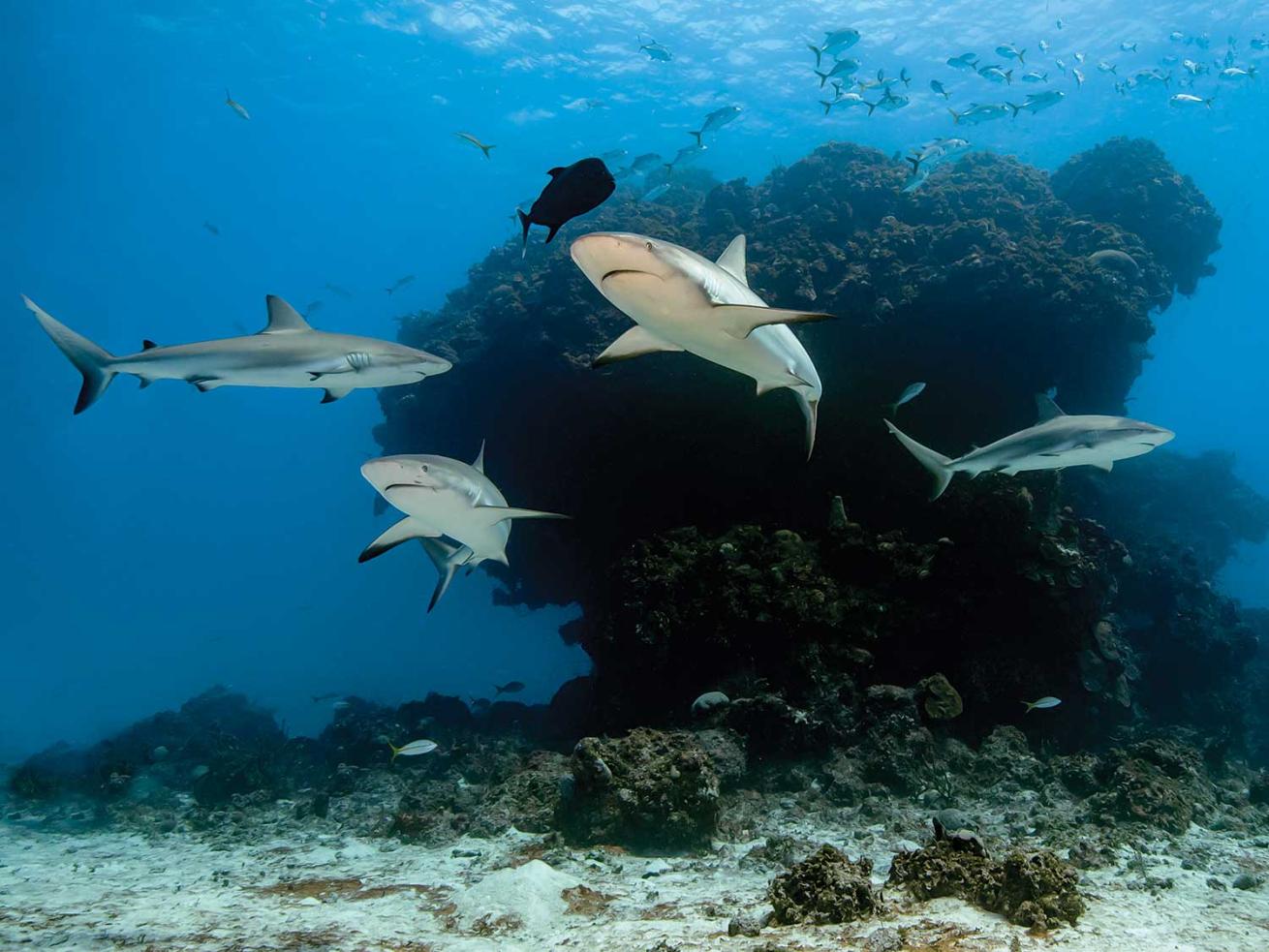
Tanya G. BurnettSharks deliver photo ops.
Learning by Doing
I jumped at the chance to board a Bahamas Aggressor charter hosted by the Mike & Mike Photography School with instructor Mike Mesgleski. He’s very knowledgeable and helpful in giving photographers the fundamentals needed to start capturing their best shots or improve existing skills.
Topical presentations are easygoing and sprinkled throughout the day without cutting into dive time. Beginning photographers need not fret: The course starts with the important nuts and bolts so that everyone has the tools to get off on the right foot—er, fin. Theory and technique progress throughout the trip.
But, perhaps most important, Mesgleski is here to assist during the dives and to critique, when it’s warranted, along the way. I have been an underwater photographer for a long time, but I still enjoy sitting in on these presentations. As Mesgleski says himself: “Underwater photographers never stop learning how to take a better picture!”
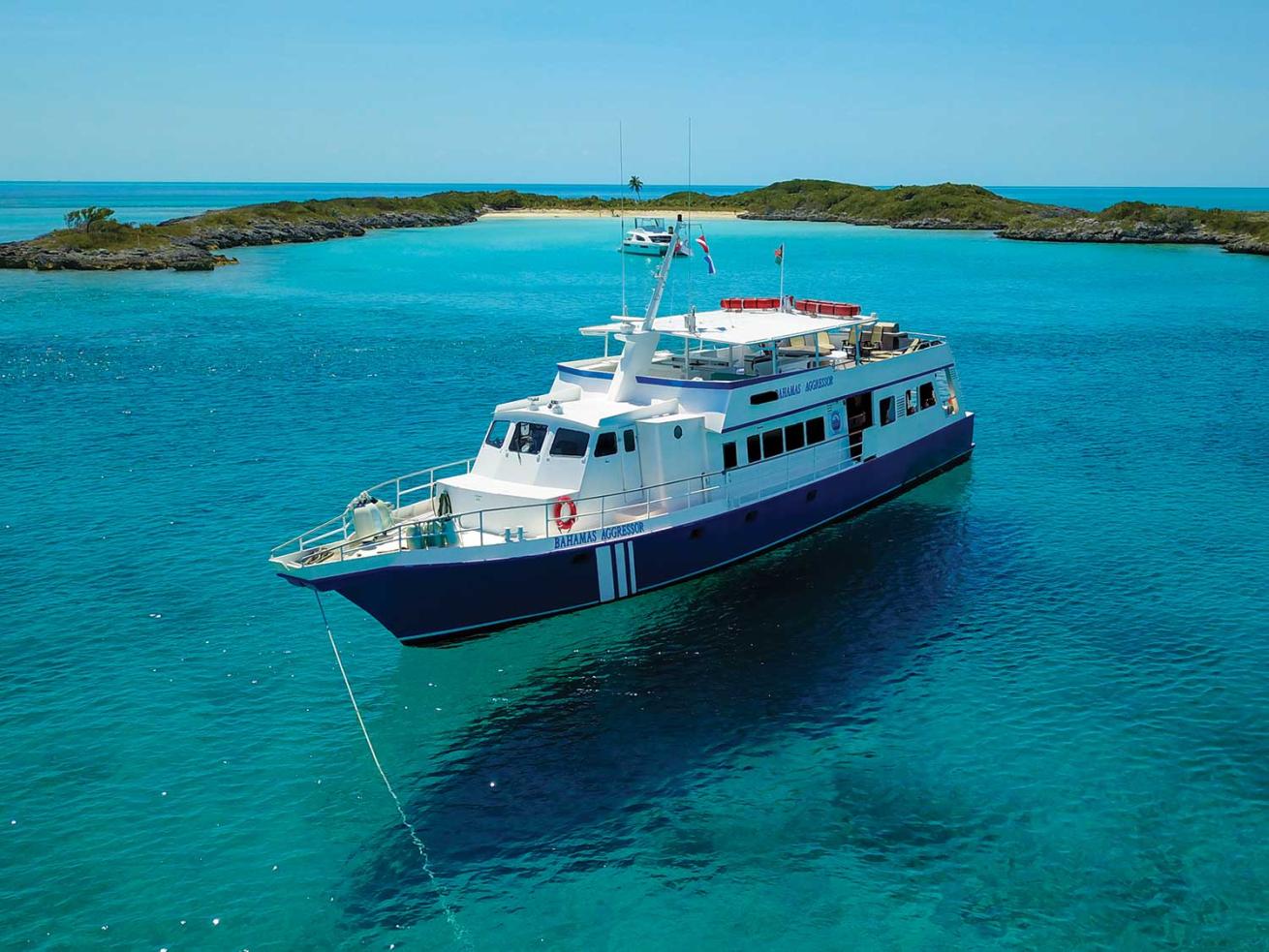
Tanya G. BurnettThe 100-foot Bahamas Aggressor offers diving off the back deck.
Life on board Bahamas Aggressor is laid-back because the crew manages the day with flexible schedules and enthusiastic dive briefings—as well as accompanying divers to point out the highlights of these rich Bahamian waters. In between dives, chef Caleb Dudley prepares sumptuous meals and delights everyone with far too many desserts.
He just smiles as guests protest through mouthfuls of chocolate that they “really shouldn’t.…”
The five nitrox dives offered daily allow for plenty of practice time. This kind of schedule could be exhausting, but when you have consistently calm, clear and warm waters to dive in, it is easy to emerge energized from one dive and be ready for the next.
For those moments not spent diving, eating or learning, the spacious upper deck equipped with hot tub is a magnet for guests and a great spot to scan incredibly aquamarine waters for dolphins and the next island destination on our cruise through the Out Islands.
The itinerary allows visits to the Exumas, Eleuthera, Cat Island, Little San Sal and Conception Island.
As each blinding white-sand beach and palm-strewn limestone island falls behind us, we eagerly cast our eyes to the next off-the-beaten-path nook and whatever treasures it might hold.
The Perfect Classroom
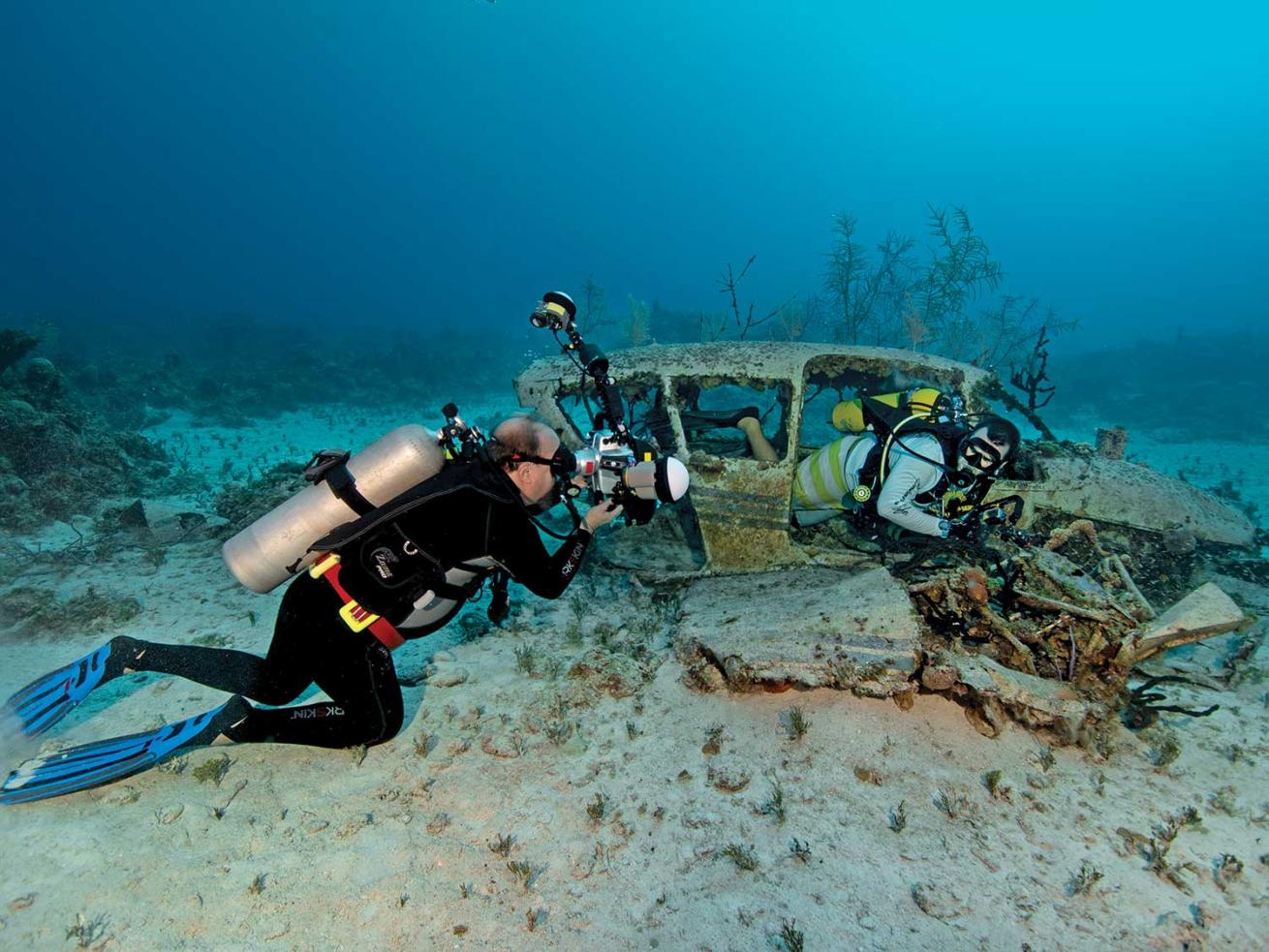
Tanya G. BurnettMike Mesgleski at the site Cut N Run.
The Bahamas’ varied underwater terrain impresses with its shallow reefs, ledges, deep walls and even coral bommies with swim-throughs awaiting at every turn.
Because sharks are a protected resource here, we get plenty of chances to see them. Sharks appear on most dives, but the crew drops a “smell box” of chum to bring the local population of Caribbean reef sharks in close to the dive site called Split Coral Rock or Shark City. Because they aren’t being fed, the sharks are curious, but calm. Just about every diver receives multiple close passes, making for terrific photo ops in the afternoon sun.
The Bahamas Aggressor’s modest size and draft allows for a close approach to shallower dive sites. Jake’s Hole, just off Eleuthera in 30 feet of water, is a truly unique spot where a natural freshwater outflow pours into the saline surroundings. This unusual confluence nurtures an extraordinarily healthy and prolific coral reef that is teeming with life. I’m delightfully surprised by the number of species this little haven supports. When the crew offers a night dive on the same site, I’m all in.
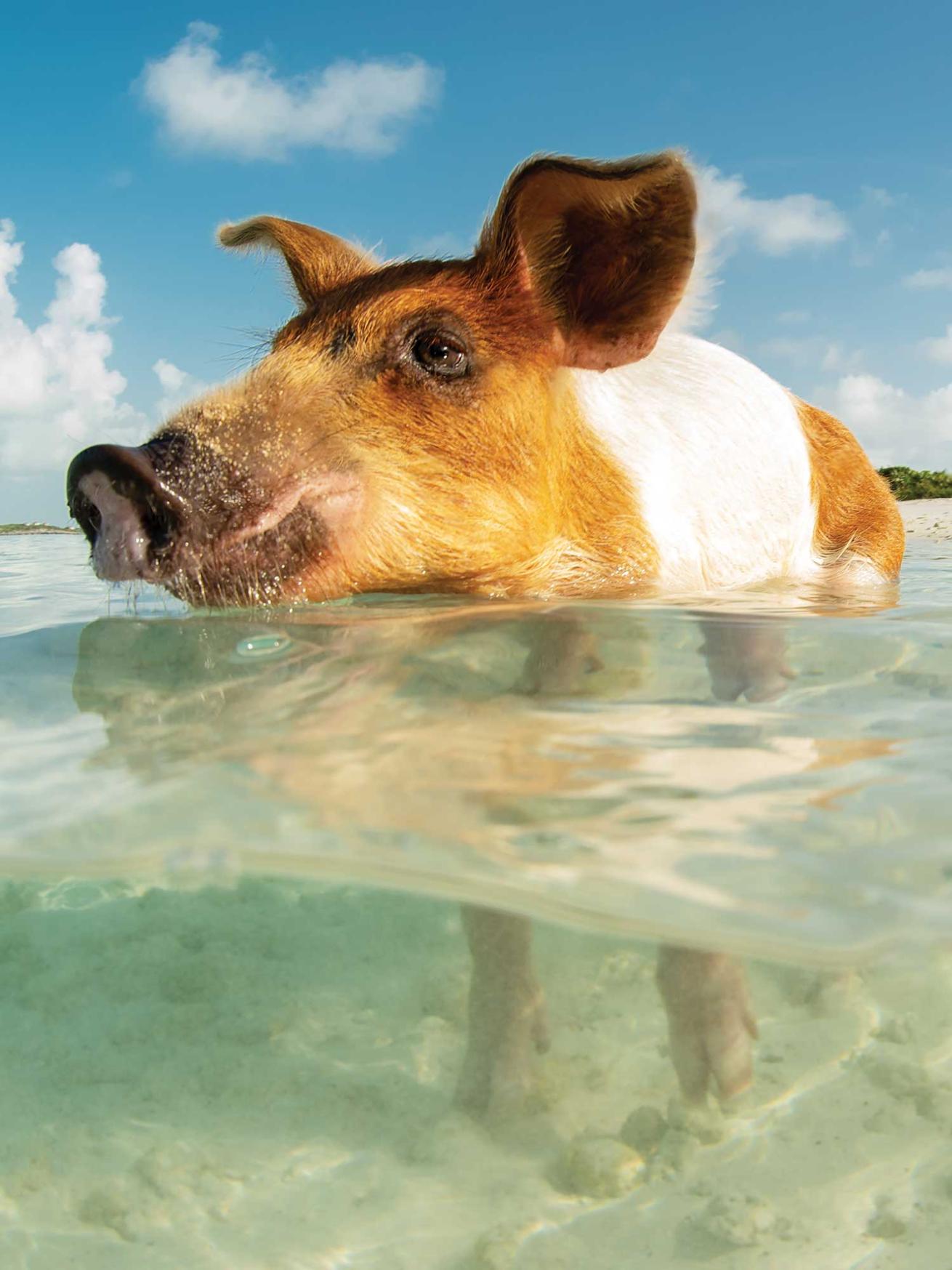
Tanya G. BurnettThe famous swimming pigs.
The parade of life continues after-hours with corals spawning, a speckled hermit crab releasing its eggs, squid and octopus putting on color-changing shows and crustacean eyes glowing everywhere. Lettuce slugs and a rare bridled pufferfish sighting is icing on the cake. Back on board, a diligent crew with warm towels and hot cocoa reminds me why I love diving from liveaboards!
Things get a little deeper at Empress Pinnacles, a site with large stands of black coral and deep-water gorgonian fans punctuated by purple and green sponge growth—creating a stunning backdrop for wide-angle photography. Capt. Christy Weaver was generous enough to lend her skills and serve as a model for a few shots, and in the near endless visibility, Bahamas Aggressor is clearly silhouetted above.
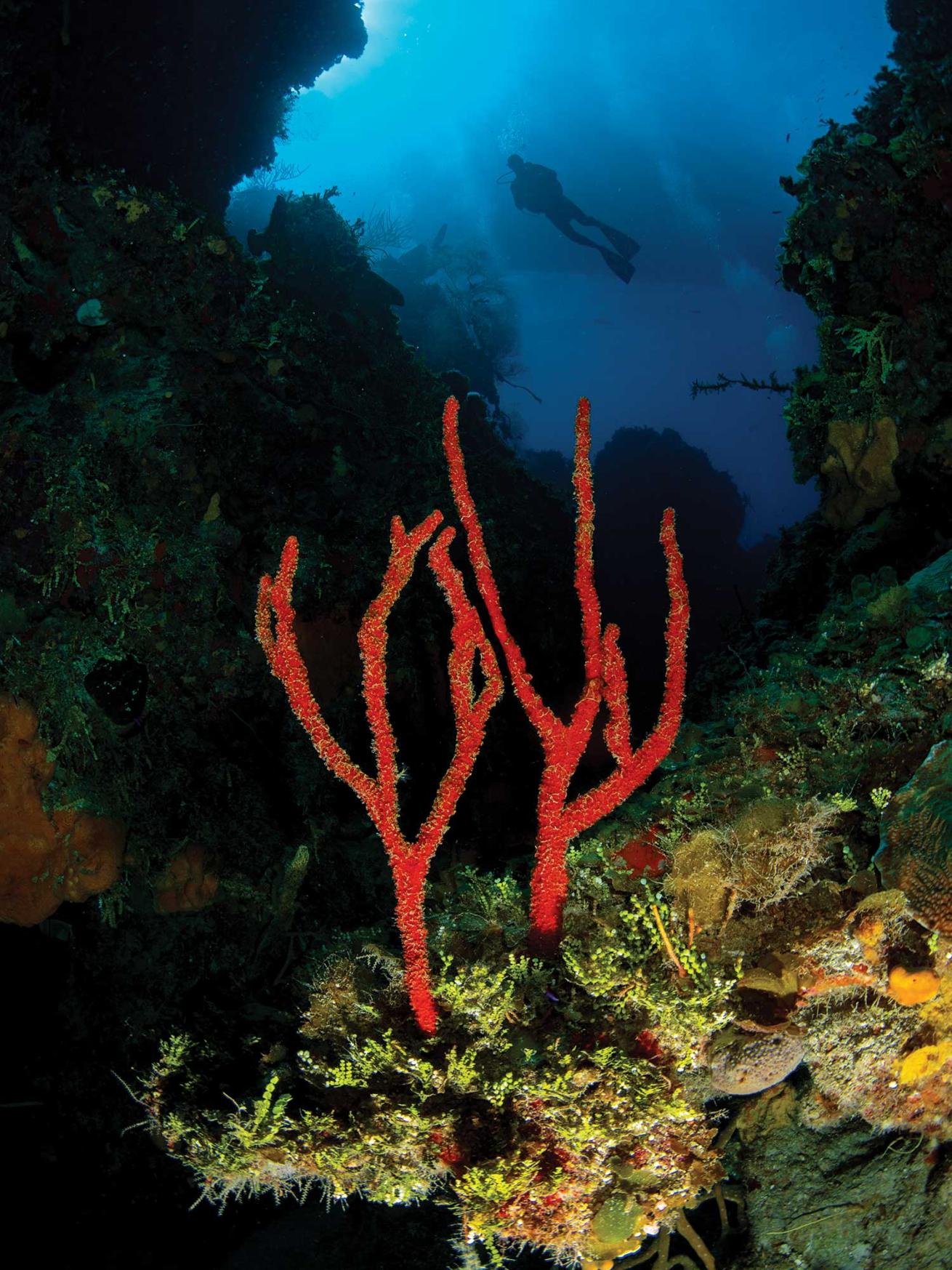
Tanya G. BurnettA red sponge thrives in the undercuts of Dog Rocks.
There are more wonderful sites and surprises off Conception Island National Park, such as Utopia and Calypso Sponges with stunning topography covered in coral, unusual sponge growth and even clusters of social feather dusters. Some of my favorite tropical fish for macro photography—fairy basslets and black cap basslets—are sprinkled over the reef like purple confetti. Nassau grouper peer out from their lairs, and the occasional indigo hamlet makes a shy appearance. Even a bottlenose dolphin, named Calypso, stops by for a brief visit.
No trip to this slice of the Bahamas is complete without a trip to Pig Beach in the Exumas. We pile into the tenders one early morning to find the marine-friendly porcine pack is waiting eagerly for some tasty treats. It is hilarious to see enthusiastic pigs swimming in the shallows, but it is challenging to photograph them at their best. Particularly when everyone has a camera in one hand and a highly desirable apple in the other. I look toward Mesgleski, who shows how to do it like a pro. His pig’s nostrils are planted firmly on his dome port.
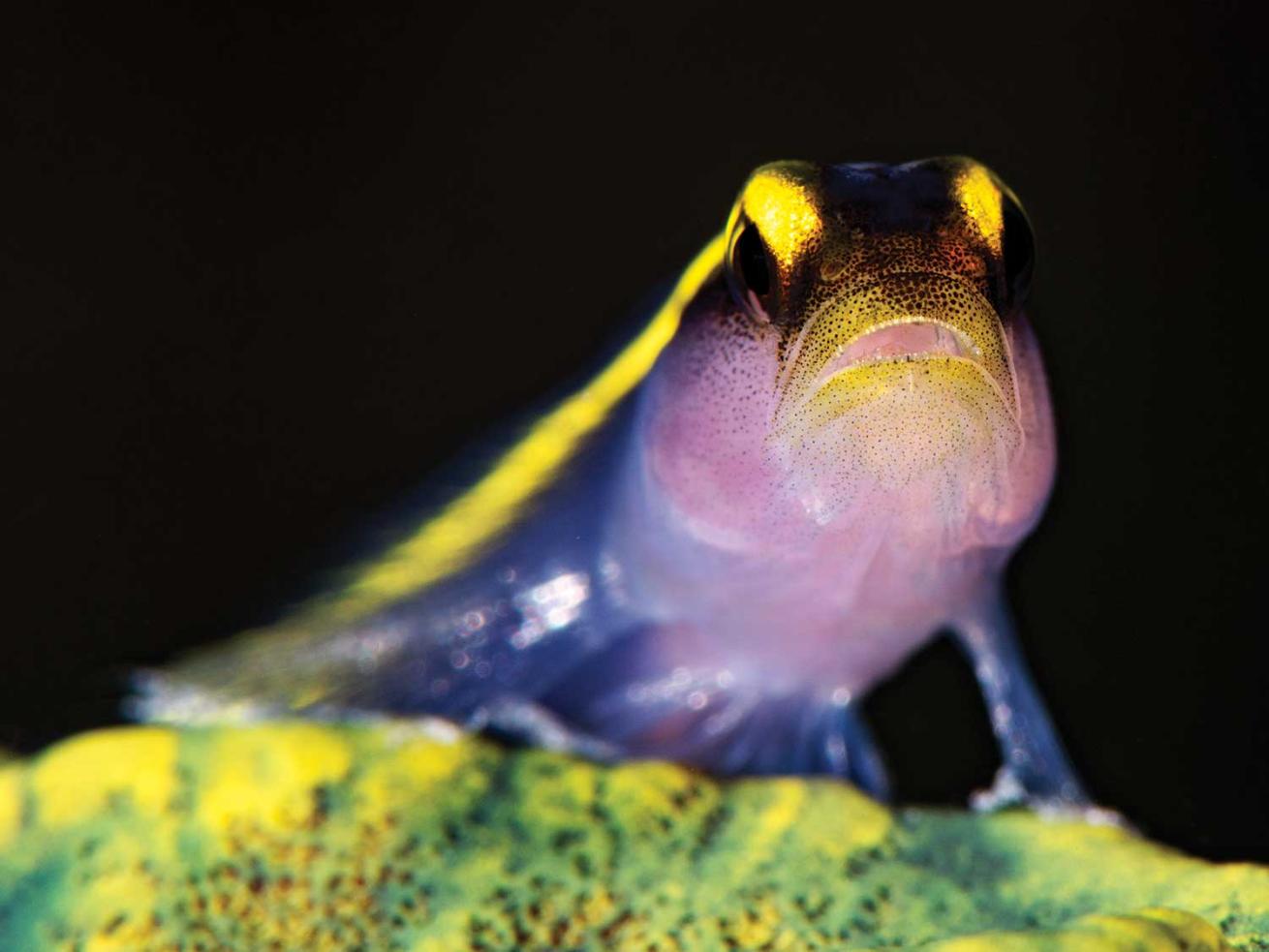
Tanya G. BurnettA neon goby at Jack's Hole.
Before the trip is over, the northern Exuma islands have one more special treat in store for us. A little dive site called Lobster No Lobster or Close Mon Reef—as in too close to the island, mon—offers a lovely surprise. Flourishing in only 25 feet of that beautiful Bahamian water is the kind of archetypal healthy coral reef that so many of us hope to find in the tropical Atlantic, but so rarely do.
Cascading layers of color and life spill over every contour while movement from dozens of species pulses in every direction. I don’t need to fire a shot—or even move. It’s enough just to enjoy it and know it will still be there when I leave the water. What a fantastic way to end a great 10 days of diving.

